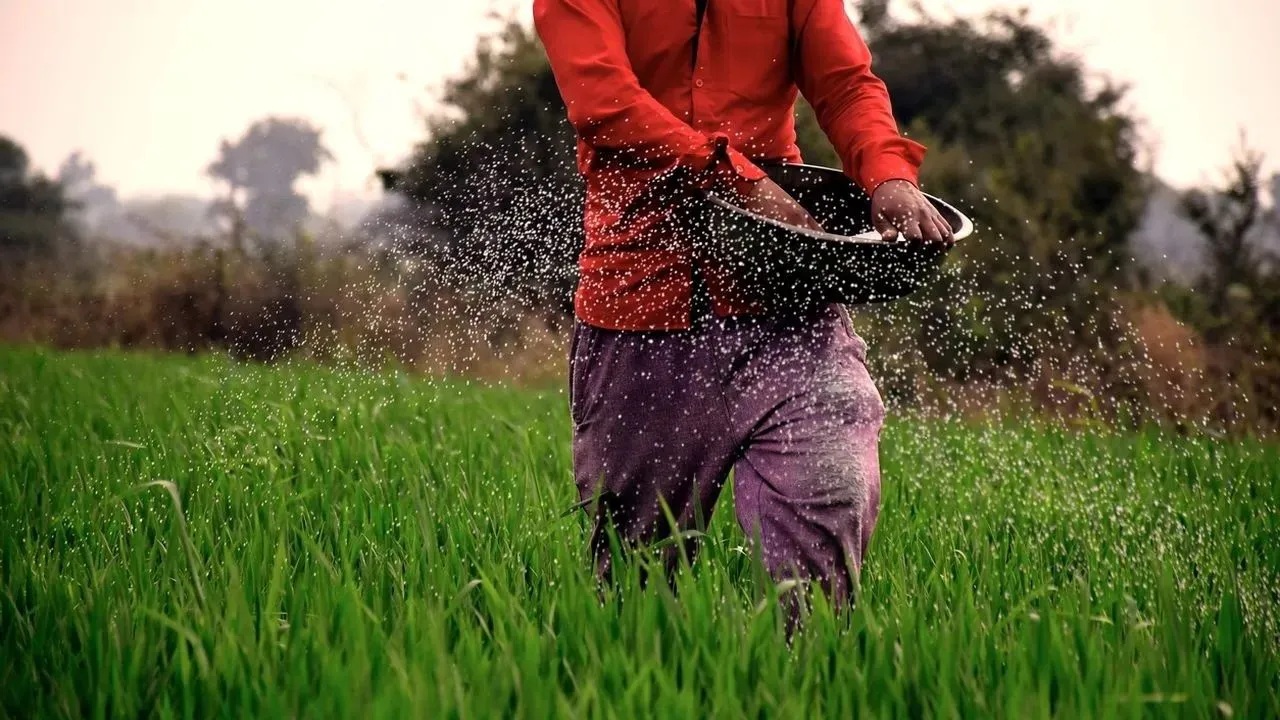Telangana’s urea requirement this season is 10.48 LMT, and the Centre has allocated 9.8 LMT. Between April and August, the state was allotted 8.3 LMT, but received only 5.32 LMT—a shortfall of nearly 3 LMT.
Published Aug 19, 2025 | 3:22 PM ⚊ Updated Aug 19, 2025 | 3:22 PM

Representational image
Synopsis: A blame game is on between political parties, even as no solution is in sight for the acute shortage of urea. The farmers are worried and agitated since they fear a loss in yield. The situation might spiral out of control if a solution is not immediately found.
As the Kharif season peaks in Telangana, farmers across the state are reeling under an acute shortage of urea, a key fertiliser for paddy and other crops.
Long queues at fertiliser outlets, rising protests, and political sparring have become the new normal, with crop yields at risk and farmers staring at major economic losses.
In districts including Khammam, Warangal, Mahbubabad, Mulugu, Karimnagar, and Rajanna Sircilla, farmers waited overnight outside outlets, often returning empty-handed. Recently, in Karimnagar’s Narella single-window, farmers queued up throughout the night, but limited stocks forced many of them to return disappointed.
In Rajanna Sircilla’s Rudrangi Mandal, farmers were seen ‘reserving’ spots in the queue by placing their footwear, a stark reflection of the desperation.
The urea shortage has stalled fieldwork, forcing farmers to travel long distances, often to receive one or two rationed bags. In Shatrajupalli village, the struggle turned symbolic when friends gifted a farmer a sack of urea on his birthday.
While the situation has not become a law-and-order issue, tempers were running high. In Siddipet’s Hymadnagar, farmers accused the Primary Agricultural Cooperative Society (PACS) staff of denying them stocks and selling urea in the black market. The farmers even offered a higher price, and the police had to intervene before the situation spiralled out of control.
Farmers in Mahbubabad and Mulugu blocked highways demanding immediate supply, while scuffles with police broke out in Khammam and Warangal during sit-in protests.
Telangana’s urea requirement this season is 10.48 lakh metric tonnes (LMT), and the Centre has allocated 9.8 LMT. Between April and August, the state was allotted 8.3 LMT, but received only 5.32 LMT—a shortfall of nearly 3 LMT.
For August alone, the state needs 3.5 LMT but received just 1.7 LMT.
A pipeline leak that forced the shutdown of Ramagundam Fertilisers and Chemicals Limited (RFCL) on 14 August worsened the crisis. Slow imports and the exhaustion of carryover stocks from the last Rabi season (1.92 LMT) brought no relief.
The ruling Congress government blamed the Centre’s “undersupply,” and urged farmers to consider organic alternatives. Agriculture Minister Tummala Nageswara Rao and Chief Secretary K Ramakrishna Rao held video consultations with district officials on Monday, 18 August, directing strict monitoring of stocks, priority allotment to small and marginal farmers, and distribution through PACS and Markfed.
The state has demanded an additional 80,000 tonnes from upcoming imports to bridge the gap. “Actual quantity released by the Centre is far less than what had been earmarked. For the months from April to August, the allocations were 1.7 LMT, 1.6 LMT, 1.7 LMT, 1.6 LMT and 1.7 LMT, respectively,” Nageswara Rao said.
“However, the Centre released only 1.21 LMT, 0.88 LMT, 0.98 LMT, 1.43 LMT and 0.82 LMT. The overall deficit in supply was about 2.08 LMT, which led to the crisis,” the minister added.
He directed the officials concerned to audit the stock at outlets and ensure the distribution of urea to the Mandal level as soon as rakes arrive.
Chief Minister A Revanth Reddy has written to Union Minister JP Nadda, but no additional allocations have been announced. Meanwhile, the Centre has flagged Telangana’s 12.4% excess urea consumption during Kharif as evidence of over-reliance, with BJP leaders claiming that the Union government had supplied 12.2 LMT against the state’s request of 9.5 LMT.
Telangana Congress MPs staged a dharna in Parliament on Monday, accusing the Centre of deliberate neglect and demanding the release of 2 LMT urea. Holding placards, they submitted an adjournment motion.
MP Chamala Kiran Kumar Reddy noted the state received only 4.50 LMT against 6.60 LMT due by 13 August, while MP Mallu Ravi called urea the “lifeline” of farmers. Later, speaking to media persons, Kiran Kumar Reddy said, “There is an acute shortage of urea. The farmers are worried about their crops. The Centre should immediately intervene to end the crisis.”
The shortage has triggered a war of words between political parties. The Congress blamed the BJP-led Centre for undersupply and “political vendetta”. The BJP accused the state of mismanagement, diversion of stocks, and patronising black marketers. The BRS slammed both, calling the crisis “a complete governance failure” and warning of a 10–15% loss in yield.
Former Minister and BRS leader S Niranjan Reddy contrasted the present crisis with the KCR-era, when emergency measures like special trains were deployed overnight to deal with shortages.
With Kharif sowing already covering 61.1 lakh acres, the timing of the shortage is critical, as urea is essential in the early growth phase to replenish soil nitrogen. Telangana ranks fifth in India in fertiliser usage (173 kg/acre), and experts warned that yields could fall by 10–15% across 53.5 lakh hectares.
For farmers already battling soaring input costs and black-market rates—20–30% above retail prices—the urea crunch threatens not only harvests but livelihoods.
(Edited by Majnu Babu).
